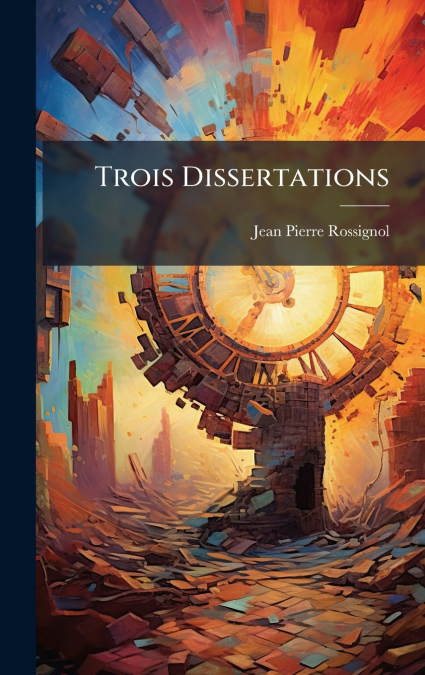
Jean-Pierre Rossignol
Trois Dissertations by Jean-Pierre Rossignol, originally published in 1862, delves into various aspects of classical antiquity. The first dissertation examines the inscription of Delphi, as cited by Pliny the Elder, offering insights into its historical and cultural significance. The second explores the work of Anaximenes of Lampsacus, titled 'Des Peintures Antiques' (On Ancient Paintings), shedding light on ancient artistic techniques and the perception of art in antiquity. Finally, the third dissertation investigates the practice of signing artworks in the ancient world, providing valuable information on artistic attribution and the cultural importance placed on authorship.This collection offers a fascinating glimpse into the scholarship of the 19th century and continues to be relevant for students and researchers interested in classical history, art history, and ancient philosophy. Rossignol’s meticulous analysis provides a valuable resource for understanding the intellectual and artistic world of the ancient Greeks and Romans.This work has been selected by scholars as being culturally important, and is part of the knowledge base of civilization as we know it. This work was reproduced from the original artifact, and remains as true to the original work as possible. Therefore, you will see the original copyright references, library stamps (as most of these works have been housed in our most important libraries around the world), and other notations in the work.This work is in the public domain in the United States of America, and possibly other nations. Within the United States, you may freely copy and distribute this work, as no entity (individual or corporate) has a copyright on the body of the work.As a reproduction of a historical artifact, this work may contain missing or blurred pages, poor pictures, errant marks, etc. Scholars believe, and we concur, that this work is important enough to be preserved, reproduced, and made generally available to the public. We appreciate your support of the preservation process, and thank you for being an important part of keeping this knowledge alive and relevant.